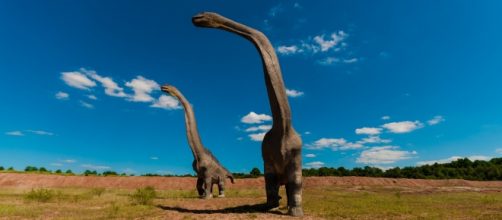Everyday,paleontology is advancing by leaps and bounds.And yet, very little is known about the dinosaurs that inhabited the region that is modern-day India. There have been no Crichton-esque novels popularizing them, and no science-fiction movies immortalizing them. The plains and plateaus of India abound in dinosaur fossils from the Mesozoic. The dinosaurs unearthed share much in common with those found in Madagascar; this is because the two regions, though separate now, were connected once upon a time, as part of the southern supercontinent Gondwana.
As a dinosaur enthusiast from India, I believe that there is a lot that the government of our country can do to promote interest in this area. The lack of public awareness and appreciation of our rich geological heritage is lamentable. It is likely that the average Indian has heard of North American herbivores like the horned triceratops, made famous by the Jurassic Park franchise; we listen wide-eyed when we hear tales of dromaeosaurs like the deadly velociraptor, and shudder at the mere mention of the Tyrannosaurus rex. Yet, most of us are blissfully oblivious to the existence of T-rex’s Cretaceous counterparts closer home.
The Rajasaurus narmadensis is one such fearsome abelisaurid theropod; meaning ‘regal lizard from the Narmada Valley’, it derives its name from the region where it was excavated.
Weighing an estimated 4 tons and measuring up to 30 feet, this spiky-spined and crested beast roamed the plains of Northern India 69 million years ago.
Our subcontinent was home to larger prehistoric behemoths as well. How many of us are aware that India has some of the largest dinosaur nesting sites in the world? In 2007, a team of explorers discovered clusters of more than a hundred eggs near Indore, which dated back to the Maastrichtian (Late Cretaceous). These had been laid by sauropods, long-necked plant-eaters measuring between 40 and 90 feet long. Paleontologists stumbled upon another such nesting site in Tamil Nadu, which lay preserved under volcanic ash deposited millions of years ago by the Deccan Traps’ eruptions.
Gujarat in particular has produced marvelous dinosaur specimens. Dinosaur trackways or pugmarks have been found in Fatehgad, in Kutch. This sparse desert was once a lush green forest complete with meandering rivers; the influx of waters from the Tethys Ocean created a fertile basin where dinosaurs thrived in the tropical clime. The now arid grasslands of Rahioli, in Kheda district, are rich in fossilized eggs, bones, skin impressions, and even coprolites (dinosaur dung). The bones belong to Megalosaurs, Brachiosaurs, Barapasaurs, Titanosaurs, Ornithomimids, and Antarctosaurs (better known as Jainosaurs). Nearby, on the banks of the Sabarmati river in Gandhinagar, is India’s only dinosaur museum, the Indroda Dinosaur and Fossil Park.
This park was set up by the Geological Survey of India, and has on display fossilized dinosaur bones, plants, ammonites, and marine reptiles.
It is my opinion that the government of India should protect and commercialize such archaeological treasure troves, by allocating resources to develop dinosaur tourism in India, and improve infrastructure and facilities. Not only will this attract foreign tourists, but also educate the denizens of our country about India’s extinct endemic species. I hope that the park and the surrounding areas will host dinosaur exhibitions, photography tours, documentary screenings, campgrounds, dinosaur digs for school children, and other such environmentally-friendly activities and amenities someday. I hope that the dinosaurs of my country will be resurrected from the past someday.
But until that day, they will continue to lie buried under the sands of time.

